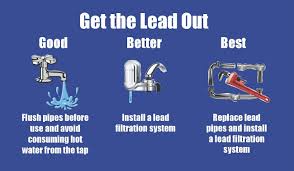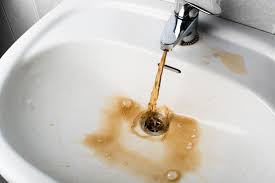In the November 4, 2019 edition of the Toronto Star, an article entitled, “Is there lead in your tap water? Canada-wide investigation exposes dangerous levels of toxic metal” started off by stating, “that hundreds of thousands of Canadians are consuming tap water laced with high levels of lead leaching from aging and deteriorating infrastructure”.
This article is the culmination of a year-long investigation by more than 120 journalists from nine universities and ten media organizations. This investigation revealed that 33% of water tests exceeded the national safety guideline of five parts per billion. The article suggests that “government oversight is often lax and secretive” when it comes to lead in our water, stating that “lead testing data in Canada is rarely made public and some municipalities aren’t required to test”.
In Ontario, where the Fix Our Schools campaign is focused, government data shows 919 lead exceedances over the past two years:
- In London, Ontario, 50% of tests conducted last year exceeded federal safety guidelines for lead in drinking water.
- Windsor had the highest number of lead exceedances over the past two years.
- Many water systems across Ontario did not test for lead in water at all over the past two years.
- Out of Ontario’s 660 municipal water systems, only 123 of them posted results of tests taken at homes during the past two years and of those 123, 42% of these municipalities showed lead exceedances.
Health Canada and the World Health Organization both agree that there is no safe level of lead in drinking water. In fact, a single glass of water highly tainted with lead can elevate a child’s blood lead level to require hospitalization. Reduction in IQ can occur even at the 5 parts per billion – the level of lead deemed safe in Canada. At high levels of exposure, lead can cause damage to the prefrontal cortext of the brain and contribute to anti-social behaviour and behavioural problems in children.
There is no known safe level of lead in a child's blood, according to EPA & Centers for Disease Control. Quebec gov't has just announced they would adopt the new "acceptable minimal concentration of lead in drinking water — five micrograms per litre." https://t.co/Gp5eme5kT9
— Fix Our Schools (@Fix_Our_Schools) October 31, 2019
According Bruce Lamphear, a leading Canadian drinking water researcher, lead in our tap water is “clearly a major public health problem, even if it’s an insidious one.
 According to a new report from the Canadian Environmental Law Association to be published this coming week, “the current state of drinking water delivery in Ontario means that Ontario residents, their children, pregnant women, and their unborn fetuses, may still be at risk of lead exposure and lead poisoning from the lead plumbing components of their homes, schools, daycares, and workplaces.” This report calls on Ontario to change legislation to require a minimum of 75% of municipal lead service lines be replaced within three to five years.
According to a new report from the Canadian Environmental Law Association to be published this coming week, “the current state of drinking water delivery in Ontario means that Ontario residents, their children, pregnant women, and their unborn fetuses, may still be at risk of lead exposure and lead poisoning from the lead plumbing components of their homes, schools, daycares, and workplaces.” This report calls on Ontario to change legislation to require a minimum of 75% of municipal lead service lines be replaced within three to five years.
However, funding is cited as a limiting factor. Water officials across Ontario told reporters that municipalities are many years – or decades – away from being able to pay for replacing all lead service lines; and that municipalities would need funding assistance from both federal and provincial levels of government. Another challenge of addressing lead in our tap water is that there is no provincial or federal inventory of lead lines so even with funding, municipalities may not even know where to start replacing lines.
BC "does require schools built before 1990 to test for lead … Gov't data shows that since 2016 more than 600 schools have reported at least one water sample that exceeded the national guideline for lead." #bced https://t.co/grkMI1wMVX
— Fix Our Schools (@Fix_Our_Schools) November 4, 2019
Given that in 2013, Health Canada predicted an economic benefit of $9-billion per year if the exposure of Canadian children could be eliminated, there appears to be not only a moral imperative to address lead in our drinking water but also an economic one. Fix Our Schools has been calling for a Standard of Good Repair in Ontario’s publicly funded schools for years now – one that would include a standard for our children’s drinking water in schools. Lead in our drinking water is an insidious public health issue – and one that, indeed, must be addressed sooner than later. More transparency on data is needed and more advocacy and more oversight.

